PGL manufactures its own high-performance optical thin-film coatings with extreme purity and excellent mechanical properties for the highest diffraction efficiency and laser damage threshold performance. PGL’s equipment utilizes e-beam and thermal evaporation, including ion assisted deposition (IAD) for increased density and stress control, as well as magnetron sputtering.
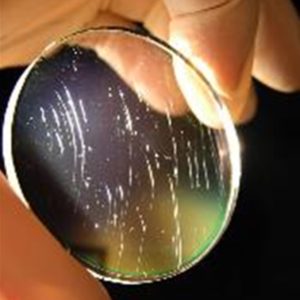
Highly reflective, high laser-damage-threshold Multilayer Dielectric (MLD) coatings are particularly vital for reflective MLD-type gratings. These coatings comprise dozens of layers and can be many microns thick. Stress in these coatings must be controlled to eliminate crazing and wavefront distortion, especially in vacuum. Excessive compressive or tensile stress distorts wavefront, whereas excessive tensile stress can also introduce the possibility of crazing resulting from microscopic cracks.
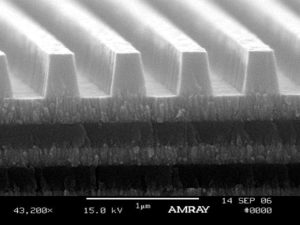
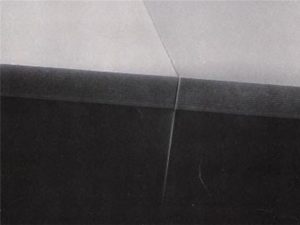
Metal coatings, such as gold, silver, and aluminum, are important for very broadband reflection gratings. The process PGL has developed for gold coating provides a conformal lamellar coating over precise features. Gold over etched fused silica provides better performance characteristics and uniformity than gold over photoresist gratings. Scatter from gold-over-glass gratings is lower and they have been shown to exhibit better temporal contrast in pulse stretchers than resist-based gratings.
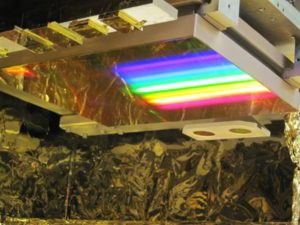
These gratings are also far less delicate than standard metal-coated photoresist gratings. For example, they will not dissolve in acetone. The gold can be stripped from etched fused silica with little to no damage to the grating. This property aids fabrication and also enables remanufacturing. If the gold becomes damaged during use (via contamination or laser damage), the grating may be shipped to PGL for stripping and recoating so long as the damage has not extended into the silica structure.
Transmission gratings require very low loss oxide antireflection (AR) coatings. These must be sufficiently broadband to match the grating spectral bandwidth.
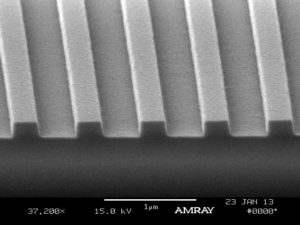
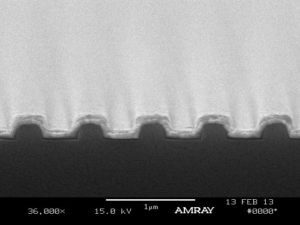
High-performance liquid coating is important for precise, uniform application of photoresist and in-process AR coatings in the grating manufacturing process. PGL’s automated liquid coater pulls substrates over a precise fluid meniscus. It achieves accurate coating thickness with excellent uniformity and minimal contamination for even highly asymmtric substrate sizes. Small substrates are held upside down by a vacuum while large substrates are held by a groove in the substrate.
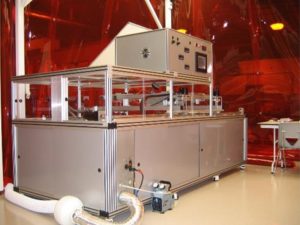
5 Commerce Way, Carver, MA 02330, USA|+1.508.503.1719|sales@plymouthgrating.com